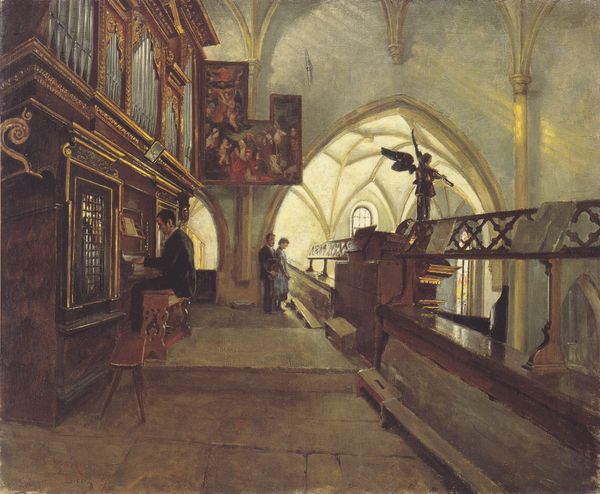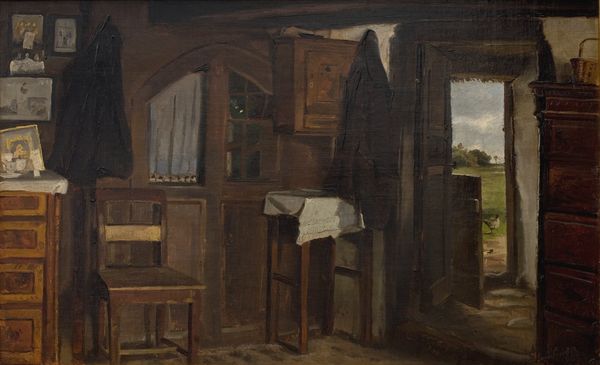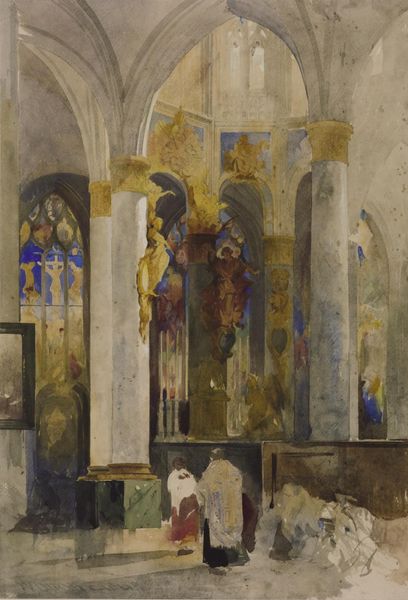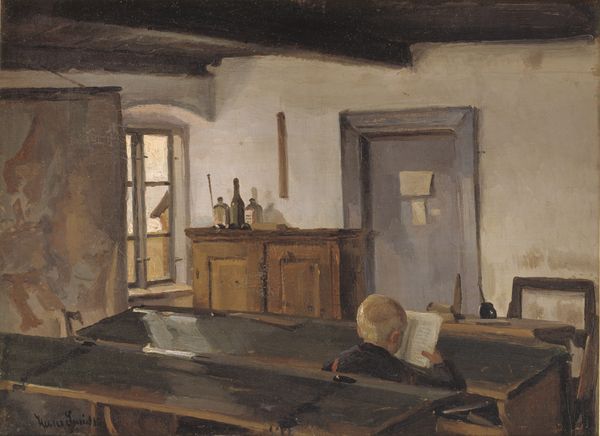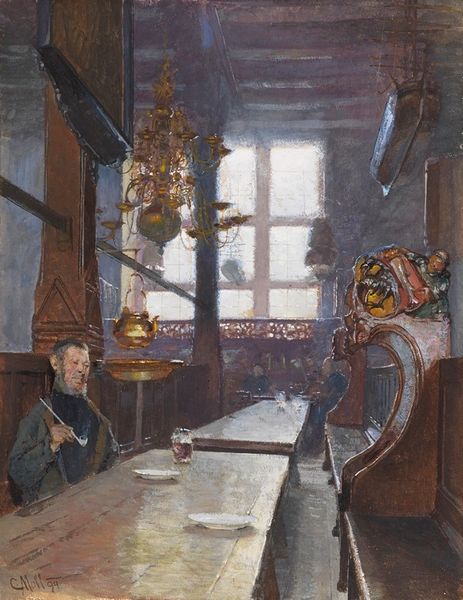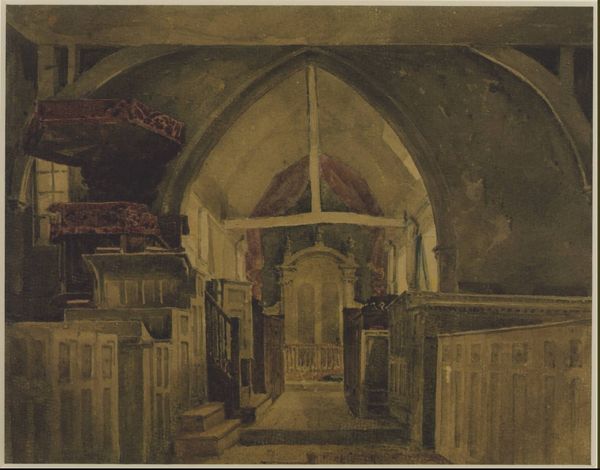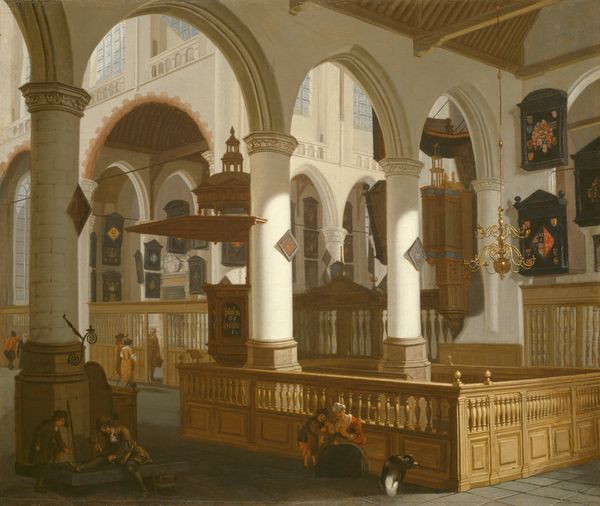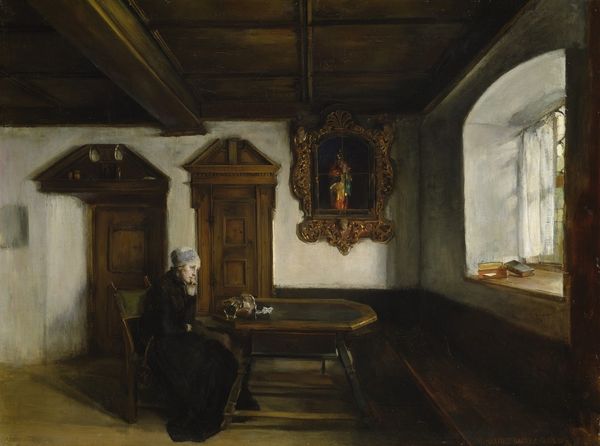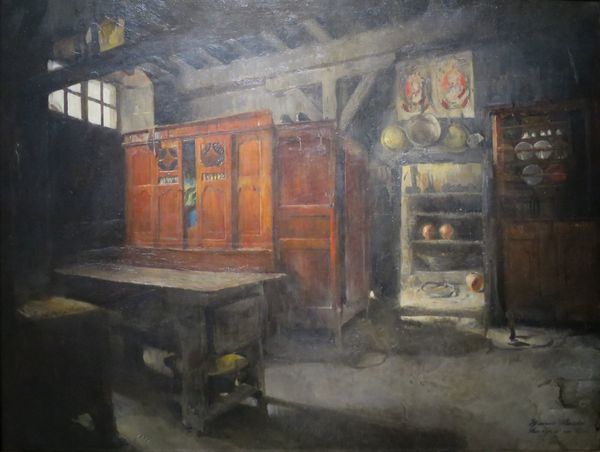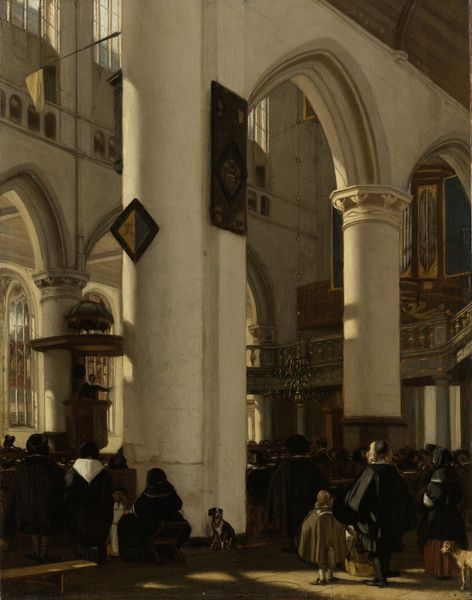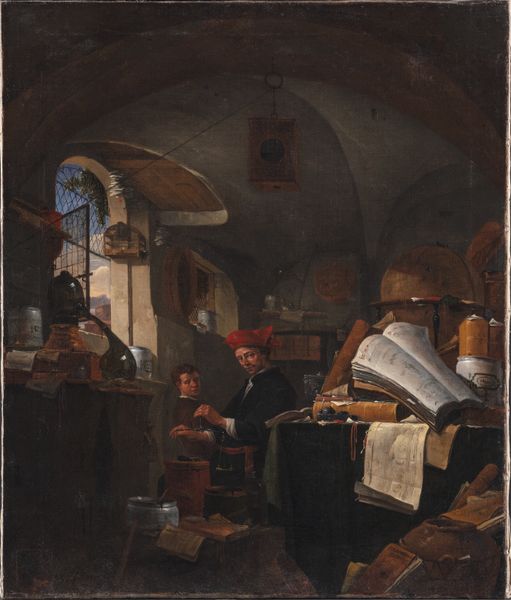
painting, oil-paint, canvas
#
painting
#
oil-paint
#
landscape
#
oil painting
#
canvas
#
genre-painting
#
history-painting
#
realism
Dimensions: 52 cm (height) x 63 cm (width) (Netto)
Editor: This is Fridolin Johansen's "A Church Service in the Island of Mors, Jutland," painted in 1893 using oil on canvas. It feels very quiet and somber, almost heavy. What's your take on this scene? Curator: Looking at it through a materialist lens, consider the production of this image. Oil paint on canvas – these are industrially produced materials, indicative of the late 19th century. Notice the way Johansen handles the paint. See those visible brushstrokes? That speaks to the labor involved in its creation. It's not just about representing a church service; it's about the *making* of that representation through specific materials and processes. Editor: That’s interesting. I was focusing more on the social aspect, the people in the church. Curator: Exactly. Think about who had access to art like this, who consumed it. Genre paintings like this were often bought by the rising middle class, eager to document and display scenes of everyday life. It connects to a growing consumer culture. What do you notice about the setting itself, this island church? Editor: It seems very simple and unadorned, almost stark. Curator: Yes, and that simplicity itself is a choice, a construction. Think about the socio-economic conditions of rural Jutland at the time. Is Johansen accurately representing reality, or is he curating a particular image for a specific audience, potentially romanticizing the lives of the rural population for consumption by an urban audience? The materials themselves tell a story, from the canvas and paint to the architectural components shown in the work. Editor: I never considered the choice of materials in that way before. So, it’s not just about what the painting depicts, but the entire process behind it, and who it was made for? Curator: Precisely. It invites us to think critically about the art market, the social context of production, and the way labor and materiality shape our understanding of art. Editor: I see that so clearly now. It's like the painting is a product of its time in so many more ways than just its subject matter. Curator: Right. That wider lens truly gives an added richness to understanding a work such as this one.
Comments
No comments
Be the first to comment and join the conversation on the ultimate creative platform.
